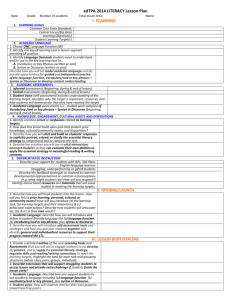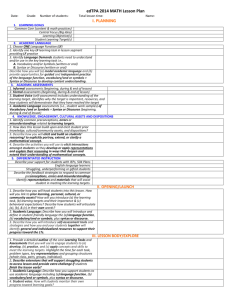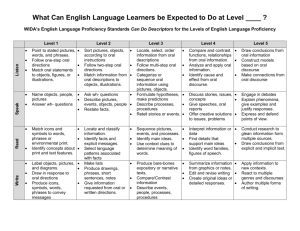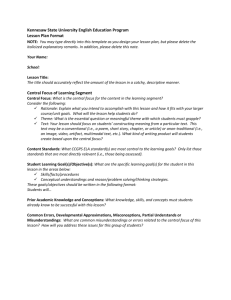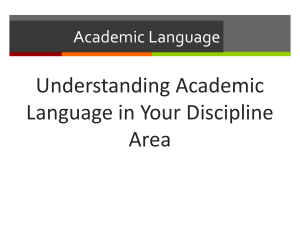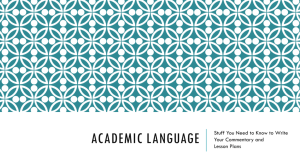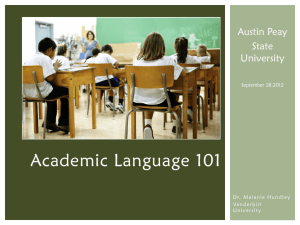Appendix B 2015 UWT edTPA Math Formal Lesson Plan Name
advertisement
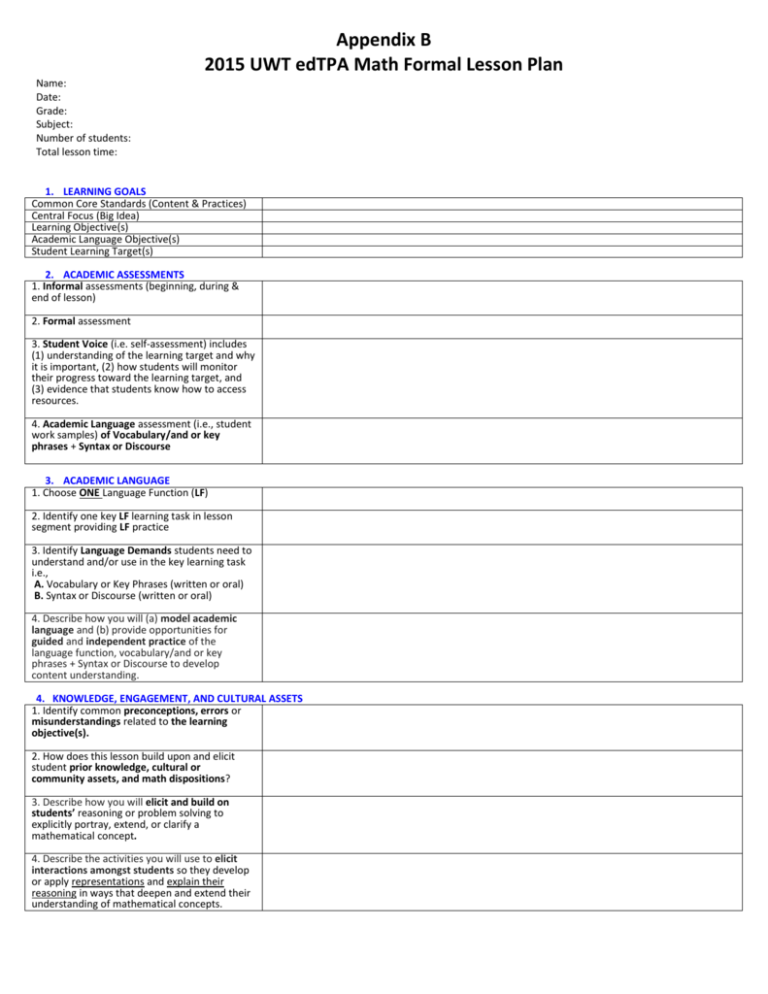
Appendix B 2015 UWT edTPA Math Formal Lesson Plan Name: Date: Grade: Subject: Number of students: Total lesson time: 1. LEARNING GOALS Common Core Standards (Content & Practices) Central Focus (Big Idea) Learning Objective(s) Academic Language Objective(s) Student Learning Target(s) 2. ACADEMIC ASSESSMENTS 1. Informal assessments (beginning, during & end of lesson) 2. Formal assessment 3. Student Voice (i.e. self-assessment) includes (1) understanding of the learning target and why it is important, (2) how students will monitor their progress toward the learning target, and (3) evidence that students know how to access resources. 4. Academic Language assessment (i.e., student work samples) of Vocabulary/and or key phrases + Syntax or Discourse 3. ACADEMIC LANGUAGE 1. Choose ONE Language Function (LF) 2. Identify one key LF learning task in lesson segment providing LF practice 3. Identify Language Demands students need to understand and/or use in the key learning task i.e., A. Vocabulary or Key Phrases (written or oral) B. Syntax or Discourse (written or oral) 4. Describe how you will (a) model academic language and (b) provide opportunities for guided and independent practice of the language function, vocabulary/and or key phrases + Syntax or Discourse to develop content understanding. 4. KNOWLEDGE, ENGAGEMENT, AND CULTURAL ASSETS 1. Identify common preconceptions, errors or misunderstandings related to the learning objective(s). 2. How does this lesson build upon and elicit student prior knowledge, cultural or community assets, and math dispositions? 3. Describe how you will elicit and build on students’ reasoning or problem solving to explicitly portray, extend, or clarify a mathematical concept. 4. Describe the activities you will use to elicit interactions amongst students so they develop or apply representations and explain their reasoning in ways that deepen and extend their understanding of mathematical concepts. 5. DIFFERENTIATED INSTRUCTION 1. Describe your support for students with IEPs, 504 Plans 2. English language learners 3. Struggling, underperforming or gifted students 4. Describe your strategies to respond to common preconceptions, errors and misunderstandings. 5. Identify representations and materials that will assist students in meeting the learning targets. 6. OPENING 1. Describe how you will hook students into this lesson. How will you link to prior learning, personal, cultural, or community assets? How will you introduce (a) the learning task, (b) learning targets and their importance & (c) behavioral expectations? Describe how students will articulate (a), (b), & (c) in their own words? 2. Academic Language: Describe how you will Introduce and define in student-friendly language the (a) language function, (b) vocabulary/and or key phrases, plus syntax or discourse. 3. Describe how you will introduce self-assessment tools and strategies and how you and your students together will identify general and individualized resources to support their progress toward the learning targets. 7. BODY 1. Provide a detailed outline of the core learning tasks and informal assessments that you will use to engage students to (a) develop, (b) practice, and (c) apply concepts and skills to meet the learning targets. 2. Highlight the time for each task, problem types, key representations and grouping structures (whole class, pairs, groups, individual). 3. Describe supports that you will use for students with specific learning needs. 4. Describe extensions that will provide extra challenge if students finish the lesson early. 5. Academic Language: Describe how you will support students to use academic language including (a) language function, (b) vocabulary/and or key phrases, plus syntax or discourse. 6. Student voice: How will students monitor their own progress toward learning goals? 8. CLOSURE 1. How will you debrief the lesson with students, specifically pulling out the big ideas of the lesson, and provide feedback to individual students? 2. Student voice: How will students reflect on the learning target(s) and identify resources to support their progress? 3. Exit task: What can you have students do that will inform your next instructional step? 4. Homework (If Applicable)
